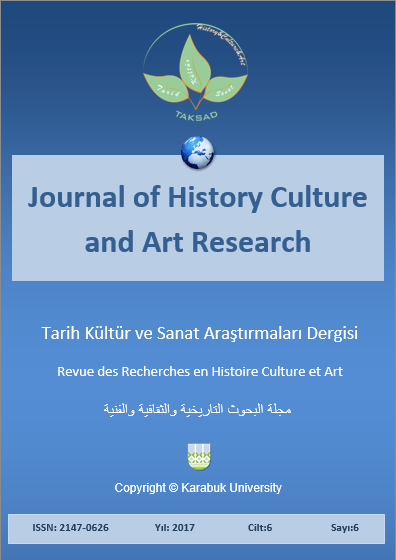Shah Abbas’s Relationship with the Larestan Miladi Dynasty Rulers (Review of the Collapse of the Lar Dynasty, the Oldest Iranian Local State)
DOI:
https://doi.org/10.7596/taksad.v6i6.1319Keywords:
Larestan, History of fars, Local governments, Safavid History, the Miladi.Abstract
The Larestan Miladi family dynasty is considered to be the oldest local state in Iran's history, governing more than sixteen centuries in large parts of the southern Fars province. According to the local narratives, the history of this state dates back to the first half of the 1st century AD with the reign of Goodarz Parthian. The children and dependents of Gorgin Milad, the founder of Larestan Miladi Dynasty ruled over the region for long due to the particular geographic and weather conditions of the region that made it ousted from socio-political events. Having declared loyalty, they were able to continue their semi-independent rule until the beginning of the reign of Shah Abbas I (996-1038 AH), with the advent of the Safavid dynasty and the centralizationist policies of this dynasty. However, the disagreement between Ibrahim Khan’s, the latest Lar Miladi Dynasty ruler, and the Provincial Government of Fars and the central government of Safavid in the Shah Abbas I , eventually led to the invasion of Allahverdykhan , the Governor of Fars to the Larestan and the fall of Lar Miladi Dynasty on 1010 AH. The current paper aims at investigating the relationships between Larestan Miladi Dynasty and Shah Abbas I as well as the reasons behind the discrepancy between this local government and the central government of Safavid and its fall using a library-descriptive methodology based on the Safavid historical resources as well as the resources investigated the local history of Larestan.
References
Falsafi, Nasrallah (1996). The Life of Shah Abbas I, Vol. 3. Tehran: Tehran University Press.
Fasaei, Mirza Hasan (1988). Naseri Farsname, Correction by Mansour Rastegar Fesee. Tehran: Amir Kabir Publishing.
Hedayat, Rezagholi Khan (2001). The history of Nasseri Razat al-Safa, Vol. 8, Correction by Jamshid Kianfar. Tehran: Asatir Publishing.
Hosseini Qomi, Ghazi Ahmad (1984).Kholasa al-Tawariqh, Correction by Ehsan Eshraqi, Volume 2. Tehran: Tehran University Press.
Ibn Balkhi (1984). The Book of Fars, Correction by Guy Listering, Nicholson. Tehran: Donyaye ketab.
Kolsinkov, E. (1976). Iran, in the eve of Arab invasion, Translated by: Yahyaei. Tehran: Agah.
Navaee, Abdolhossein (1973). Shah Abbas, Collection of Historical Documents. Tehran: Iran Culture Foundation.
Shirazi, Abdi Bey (1966). Takmelat Al-Akhbar, Corrected by Abdolhossein Navaee, Volume I. Tehran: Cultural Scientific Publishing.
Silva, Y. Figueroa (1984). Figueroa, Garcia de Travels, Ambassador of Spain: at Shah Abbas I court, translated by GholamRaza Samee. Tehran: Nashre Now.
Tavernier, Jean Baptiste (1984). Tavernier travelogue, translation by Abuturab Nouri. Isfahan: Sanaee Library publication.
Teixiera, Pedro (1902). The travel of pedro teixiera, translated and annoted by William F. Sinclair. London.
Turkman, Iskandar Beg (2003). The Able of Abbasi, Correcting by Iraj Afshar, Volume I and II. Tehran: Amir Kabir Publishing.
Unknown Author (1985). Jahangosha Khaghan, Introduction and Confirmation Allah Dena Muzaffar. Islamabad: Persian and Pakistan Research Center.
Vosoughi, Mohammad Bagher (2001). The history of immigration of tribes in the Persian Gulf and Hormoz Molok. Shiraz: Fars Encyclopedia Publishing House.
Vosoughi, Mohammad Bagher (2006). Detailed History of Larestan. Tehran: Hamsayeh Publications.
Downloads
Published
How to Cite
Issue
Section
License
All papers licensed under Creative Commons 4.0 CC-BY.- Share — copy and redistribute the material in any medium or format
- Adapt — remix, transform, and build upon the material for any purpose, even commercially.
Under the following terms:
Attribution — You must give appropriate credit, provide a link to the license, and indicate if changes were made. You may do so in any reasonable manner, but not in any way that suggests the licensor endorses you or your use.
- No additional restrictions — You may not apply legal terms or technological measures that legally restrict others from doing anything the license permits.







